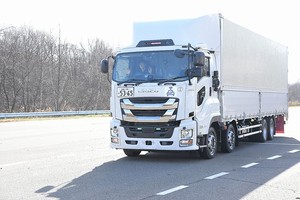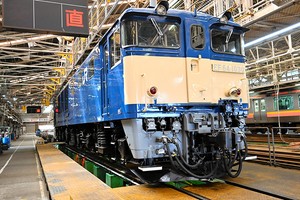THE ASAHI SHIMBUN
March 1, 2023 at 19:03 JST
The decision by the startup Rapidus Corp. to build a semiconductor factory in Chitose, Hokkaido, is being touted as the biggest business investment ever for the northernmost main island.
As the firm seeks to catapult itself into a leading position in the industry by winning the race to make next-generation chips, it is expected to attract scores of other related companies looking to set up shop next door.
The company announced on Feb. 28 it aims to become a domestic producer of next-generation semiconductors with the new plant and begin trial production there in 2025.
The investment is being hailed as a massive economic win for Hokkaido, estimated to be worth around 5 trillion yen ($37 billion).
“In the history of Hokkaido, this is the largest investment in the region and its biggest instance of attracting business,” Hokkaido Governor Naomichi Suzuki said in welcoming the plant.
Experts said the key to its success will be whether the company can secure enough funding and develop the advanced technology needed for making next-generation chips.
The company will build the plant in an industrial park called Chitose Bibi World that is close to Shin Chitose Airport.
According to Rapidus President Atsuyoshi Koike, the plant is expected to occupy a site that spans several dozen hectares.
He estimates the company will need 2 trillion yen for research and development before it can start trial production, and then 3 trillion yen to start mass-producing semiconductors.
Koike visited Suzuki on Feb. 28 to inform him the company has decided to build the plant in Chitose Bibi World.
During the conversation with Suzuki, Koike cited Chitose’s excellent infrastructure as a main reason for choosing the site. He pointed to the city’s rich water supply, which is essential for chip manufacturing, and its ability to generate renewable energy.
When Koike was asked by Suzuki about the company’s aspirations for the new plant, he replied: “We must make incredible innovations. We intend to create a plant that will stun the world by utilizing artificial intelligence and deep learning.”
Manufacturers of materials and equipment used to produce semiconductors are expected to migrate to the city and open shop close to the new Rapidus plant.
After meeting the governor, Koike told reporters a “tremendous” number of companies will move to Chitose to be close to the plant, likely around 100.
Rapidus was founded just last year by eight leading Japanese companies, including Toyota Motor Corp. and telecom giant NTT Corp.
These companies contributed 7.3 billion yen in total to launch the new firm.
Rapidus aims to mass-manufacture next-generation semiconductors with a line width of just 2 nanometers. The narrower the line width, the more elements can be put in the chips, making them perform better.
The company hopes its next-generation chips will be used for artificial intelligence or quantum computers, areas where competition to develop new technologies is fierce.
But the technology of Japanese companies for narrowing line width is about a decade behind those of Taiwanese or South Korean companies, sources said.
That is because Japanese companies have so far only succeeded in narrowing the line width to 40 nanometers.
But even Taiwan Semiconductor Manufacturing Co., the world’s largest maker of semiconductors, has yet to mass-produce chips with line widths of only 2 nanometers.
Rapidus is trying to quickly secure the technology needed to make those kinds of advanced chips in cooperation with U.S. tech giant IBM and others.
Another big challenge for the company will be securing enough personnel for the new plant.
Koike said the plant will at first need several hundred employees, but ultimately upward of 1,000.
And chip makers are competing for engineers amid the worldwide rise in demand for semiconductors. Rapidus hopes to attract skilled personnel by marketing the attractiveness of living in Hokkaido, which is rich in nature.
Securing the 5 trillion yen in funding is another big hurdle it will have to clear.
“We might secure funding from the markets,” Koike said.
The industry ministry has decided to support Rapidus’ plan to build the new plant because it sees this as Japan’s last chance to enter the market for next-generation chips.
On top of a 70-billion-yen grant for the plant from the government fund set up to support developing technology to make next-generation semiconductors, the ministry will consider further support for the company.
When Rapidus eventually builds its mass-production lines for making next-generation semiconductors at the new plant, the company will become eligible for grants from the government’s “specified semiconductor fund.”
“Our government would like to provide needed support (for the new plant),” economy minister Yasutoshi Nishimura said at a news conference on Feb. 28.
The government has already decided to provide up to 476 billion yen from the fund for TSMC’s new plant under construction in Kumamoto Prefecture.
(This article was written by Kenji Izawa, Satoshi Shinden and Takumi Wakai.)




















A peek through the music industry’s curtain at the producers who harnessed social media to help their idols go global.
A series based on diplomatic documents declassified by Japan’s Foreign Ministry
Here is a collection of first-hand accounts by “hibakusha” atomic bomb survivors.
Cooking experts, chefs and others involved in the field of food introduce their special recipes intertwined with their paths in life.
A series about Japanese-Americans and their memories of World War II